Demystify Technology – A kind of Manifesto
A Fortunate Look into the Spam Folder
When I opened my email program on an ordinary workday in the morning in 2019, I did something unusual for me: I scanned through the spam folder with the faint suspicion that I had seen an important mail briefly in my inbox before it was automatically disposed of by the email filter. Surprised, I discovered an invitation from the “Art Directors Club” to give a talk on my teaching concept “Programming Posters” at the ADC Digital Experience Conference. This was the title of a seminar in the field of communication design that I had given at the Rhine-Waal University of Applied Sciences. It was about programming in the context of graphic and communication design. Over the course of a semester, my students were to develop a series of poster motifs using the programming language Processing, so that they could familiarize themselves with the basic workings of the computer but also with the wide-ranging possibilities of programmed design. The invitation to speak about this at a large conference made me totally happy and I accepted immediately.
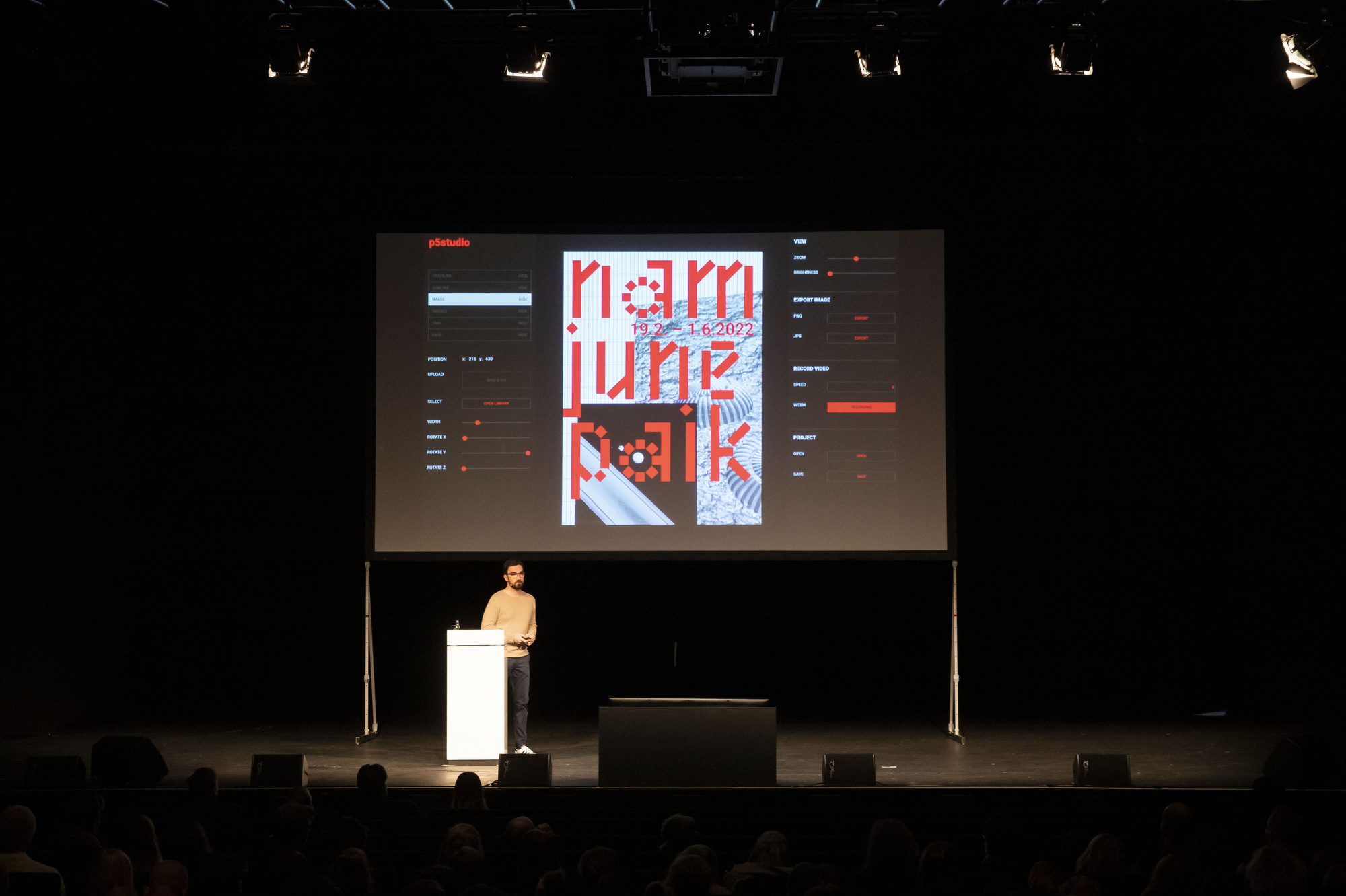
On November 21, I stepped onto the huge stage in Düsseldorf’s Capitol Theater, behind me a large screen on which the welcome slide of my keynote was projected. In front of me in the audience were about 700 people. I went fully into autopilot. Speaking in front of people, picking them up and inspiring them, that’s what I’m good at. Some of my students from Dortmund were sitting in the front row, which gave me additional support. Pressing a button on the small remote control in my hand started the teaser video on the second slide. Now blue and white poster motifs flickered across the screen, sometimes in a vacuum, sometimes mounted on computer displays in urban scenes, in pedestrian tunnels and bus stops. Driving electronic music boomed into the hall from speakers hanging from the ceiling. I had produced the music video myself to arouse the curiosity of my students.
The title “Programming Posters” was a deliberate provocation for the more conservative part of the graphic design bubble. I did not show printed, static posters, but moving images. In my lecture, I spread the thesis that the static and printed poster, the holy grail of graphic design in the German-speaking area, is losing importance as a medium and that we will think communication design independently of the medium in the future. To achieve this, I was convinced at the time that we would have to expand the concepts and job descriptions. For this purpose, I showed an intersection diagram in which two circles overlapped. One circle said “Design,” the other “Technology. Then in the intersection in bold: “The Creative Technologist”. By this I meant a new type of designer who is a hybrid between creativity and engineering. I had picked up the term somewhere on a social media profile, and after a bit of research I found out that in 2019 there were already job ads from agencies specifically looking for “Creative Technologists”.
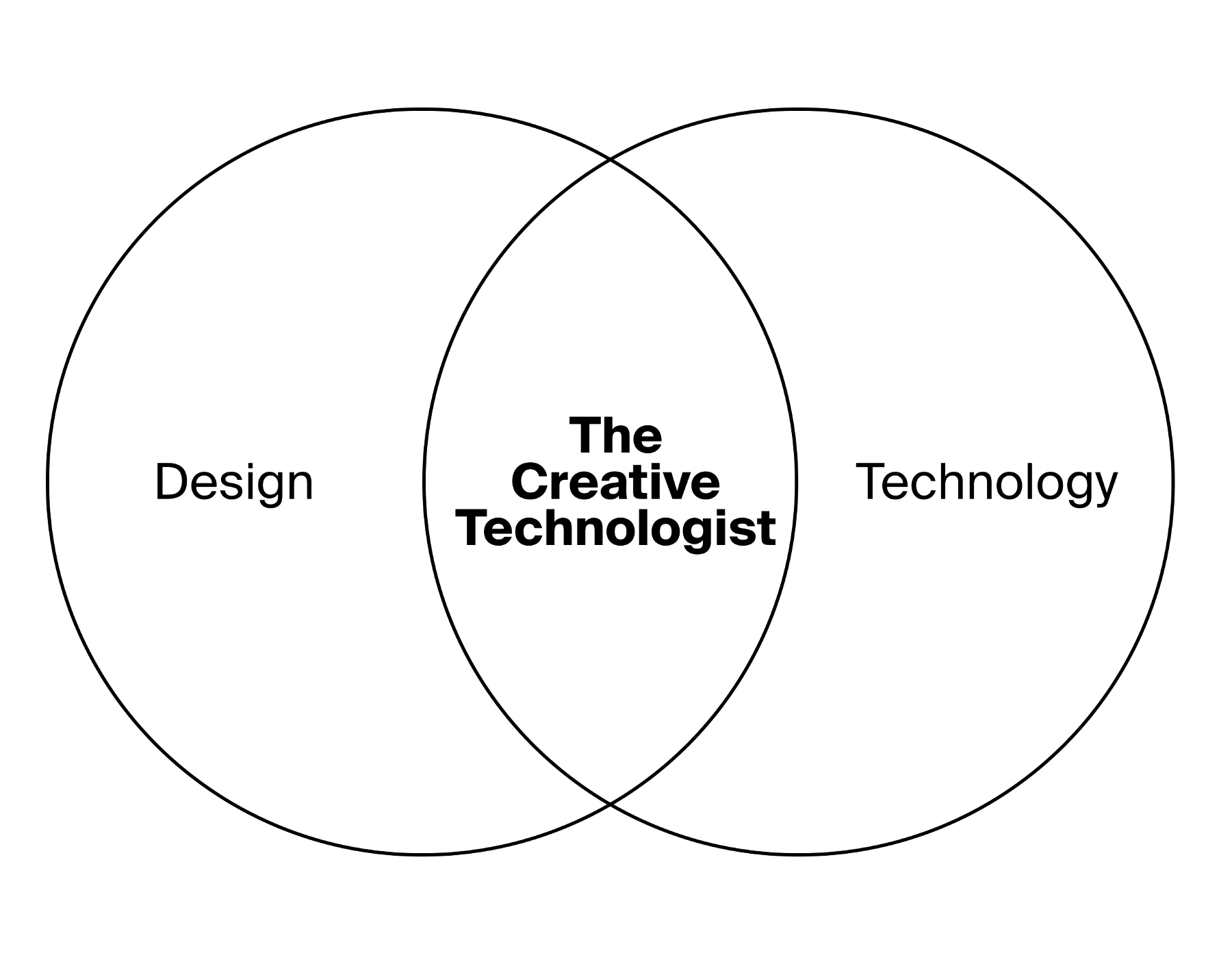
I must have seemed a bit naïve with my enthusiasm. At the time, I was still quite insecure from today’s perspective, but I loved what I was doing, was intoxicated that my work had made it onto that stage. After the performance, something interesting happened: despite the applause, interviews and many people wanting something from me, I felt increasingly insecure the following days. Had I sent the right message? Did people understand what I wanted to say? Do I even know myself? Was this even the right topic for me?
This feeling culminated shortly after the conference, when I gave an interview for “PAGE Online” that was about my teaching. When I then discovered the article online, my breath caught: there I appeared as a smiling young man, above the headline: “Only programming designers are up to the challenges of the future” (link). I don’t remember saying this sentence like that, and the arrogance that emanated from this text-image combination triggered feelings of shame in me. This was a very important moment for me, because I realized that I had not yet arrived, that I wanted to express something for which I still lacked the words. So I made the decision to explore the topic of Creative Coding, now even deeper and more thoroughly.
Back to School
I had already made the decision to do a master’s degree in the newly founded focus Digital Media and Experiment at Bielefeld University of Applied Sciences before my appearance in Düsseldorf. I started my studies in October 2019, it took a total of three years and in the summer of 2022, in the second year of the Corona pandemic, I completed my thesis entitled “Creative Coding as a School of Thought”.
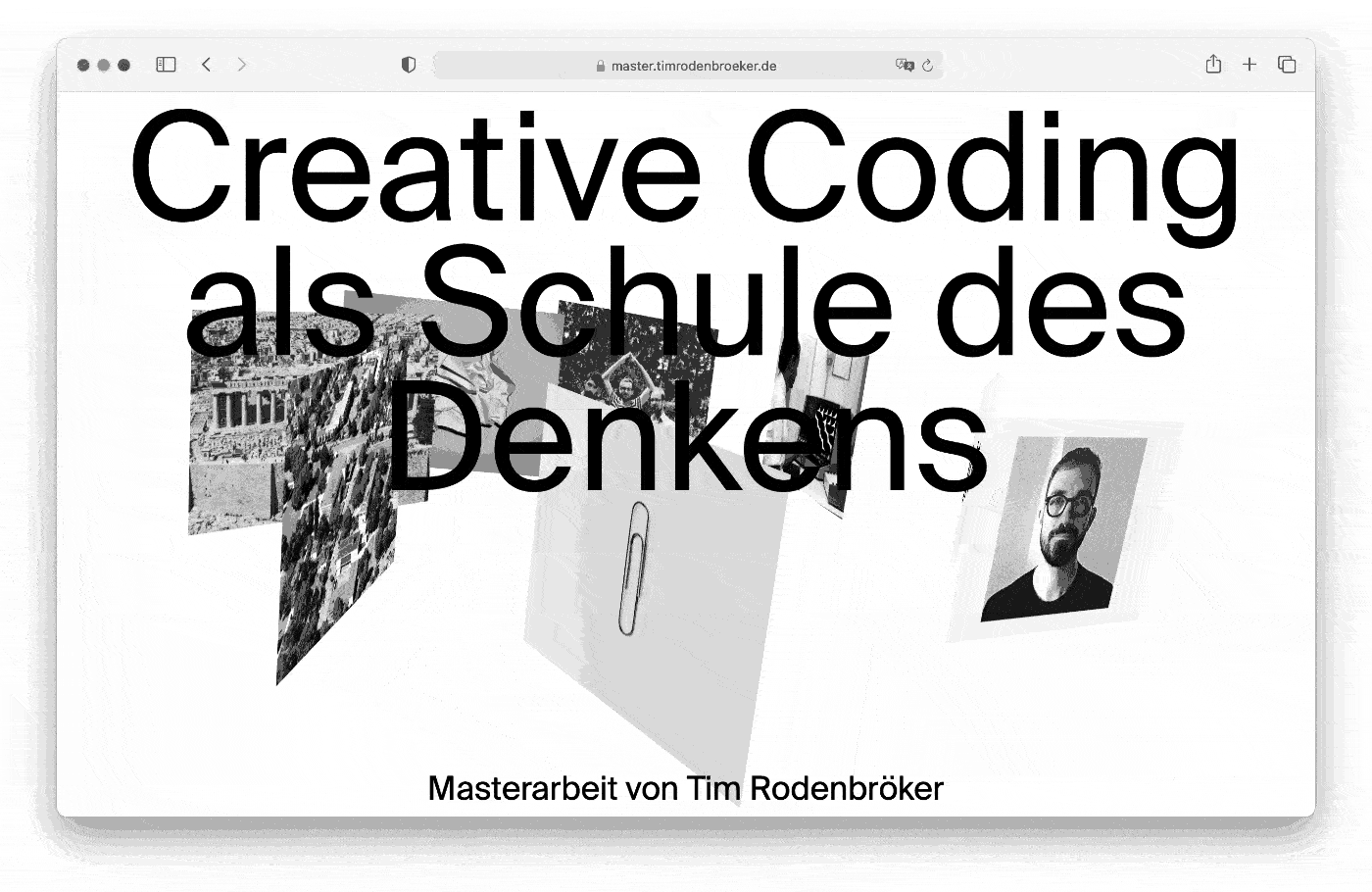
I questioned everything. Before I studied for my master’s degree in Bielefeld, I was of the opinion that coding should be an elementary component of every modern design curriculum. In the meantime, I see it much less dogmatically, because I have often experienced that students were not yet ready to open up to the topic, even if they were interested in it. Resonating with code as a tool is, in my opinion, elemental to an enjoyable and thus effective learning process. Students who are fundamentally opposed to the subject are actually put off and traumatized over the course of a semester, in the worst case scenario. They store programming away as an unpleasant experience and then possibly avoid it for life. I think it is very important that students actively choose to take such a course. Then a magical atmosphere full of curiosity and enthusiasm can develop in the group.
During my studies, I significantly increased my altitude and took a bird’s eye view not only of the design sector, but also of people’s attitude towards technology itself. It became increasingly clear to me how unreflectively we humans deal with new technologies and how many new problems we create with them. One of my theses was: If machines, data and algorithms dominate our living and working world to an unimaginable extent, Creative Coding can serve as a tool and as a culture for reflection and awareness of the true structures of digital technologies. In the preface of the thesis, I put it this way:
Our world is changing at a breathtaking pace. Technological progress is continuously leading to fundamental transformations. It is time for us as designers to engage courageously and critically with the technologies that shape our everyday lives. This requires that we consistently engage with the hidden structures that are hidden behind the visible surfaces. The method that enables us to do this is called Creative Coding.
I think I’ve hit on an important point there, and there is some scholarly work to support my thesis. Although there are many ways to cultivate reflective thinking about technology, creative coding is particularly interesting because it is creative and productive. It allows us to create artistic artifacts in which the manifestations of the digital are made central and subjectively experienced.
Demystify Technology
What has happened to me as a human being since I consciously decided to use Creative Coding to think deeper into the basic structures, the anatomy of data, software and algorithms? I have gained a much more profound understanding of the complex workings of software. I realized that code is the material that makes up our digitized present. I can and do think about technology differently today than I used to, even more critically, but also much more creatively. I’ve come to realize that a huge amount of the technology we use today is superfluous and only exists because we’re used to believing marketing messages from big companies. I’ve been refurbishing old laptops with Linux and thought, “Wait a minute, why are we throwing away old computers when we can easily fix them?”. Today, I have developed a great joy in questioning all the technology we assume we need. I enjoy unmasking it, recognizing its true structures.
In the meantime, I have found a formulation that gets to the heart of this attitude and today guides me like a compass in the development of my projects: “Demystify Technology”.
Demystify Technology is an invitation to expose and unmask technological aspects of our everyday lives. For me, the phrase expresses an attitude of productive doubt about the way we as humans interact with technology. It is formulated so briefly that it leaves a lot of room for expansion. With that, I will now move on, soon hopefully again with curious students, to explore undiscovered territories.
Related Links
- Case Study: Programming Posters
- ADC Digital Experience Conference 2019 – Aftershow movie
- https://page-online.de/branche-karriere/interview-mit-tim/
- Creative Coding als Schule des Denkens
- Creative Coding as a School of Thought
- https://timrodenbroeker.de/how-to-breathe-life-into-an-old-computer/
Footnotes
- (1) Vgl. Georg Trogemann, Jochen Viehoff, code@art: Eine elementare Einführung in die Programmierung als künstlerische Praktik, Springer, 2005 , S. 9
Related
 A reflection on Processing Community Day Copenhagen 2023
A reflection on Processing Community Day Copenhagen 2023
I’ve been travelling a lot in the last few months. Still, it was only during a short stay in Copenhagen […]
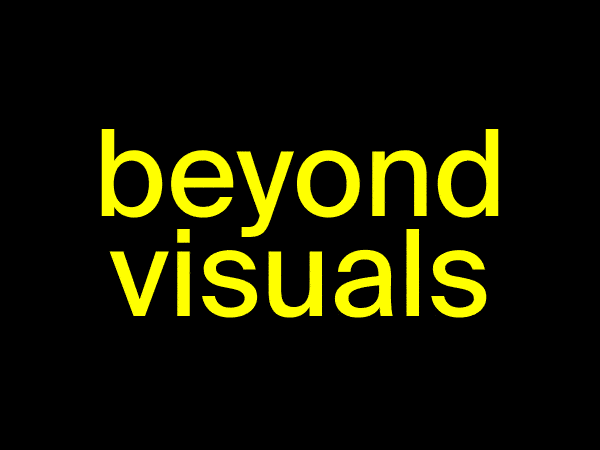 What Creative Coding can teach you beyond crafting visuals
What Creative Coding can teach you beyond crafting visuals
Learning to code has had a bad reputation for ages. Many people have the impression that it’s all about acquiring […]
 How I built myself a Digital Garden
How I built myself a Digital Garden
It was a red hot day in July 2023 when I met Alex Muñoz for breakfast in the morning at […]
 Digital Impact @ Disseny Hub
Digital Impact @ Disseny Hub
A few days ago, I visited the Disseny Hub in Barcelona to see the exhibition “Digital Impact”. On the website, […]
 Thoughts on Artificial Intelligence
Thoughts on Artificial Intelligence
Photo: Vyběr Socky What a ride! I’m sitting in the room of a luxury hotel in Prague, once again packing […]
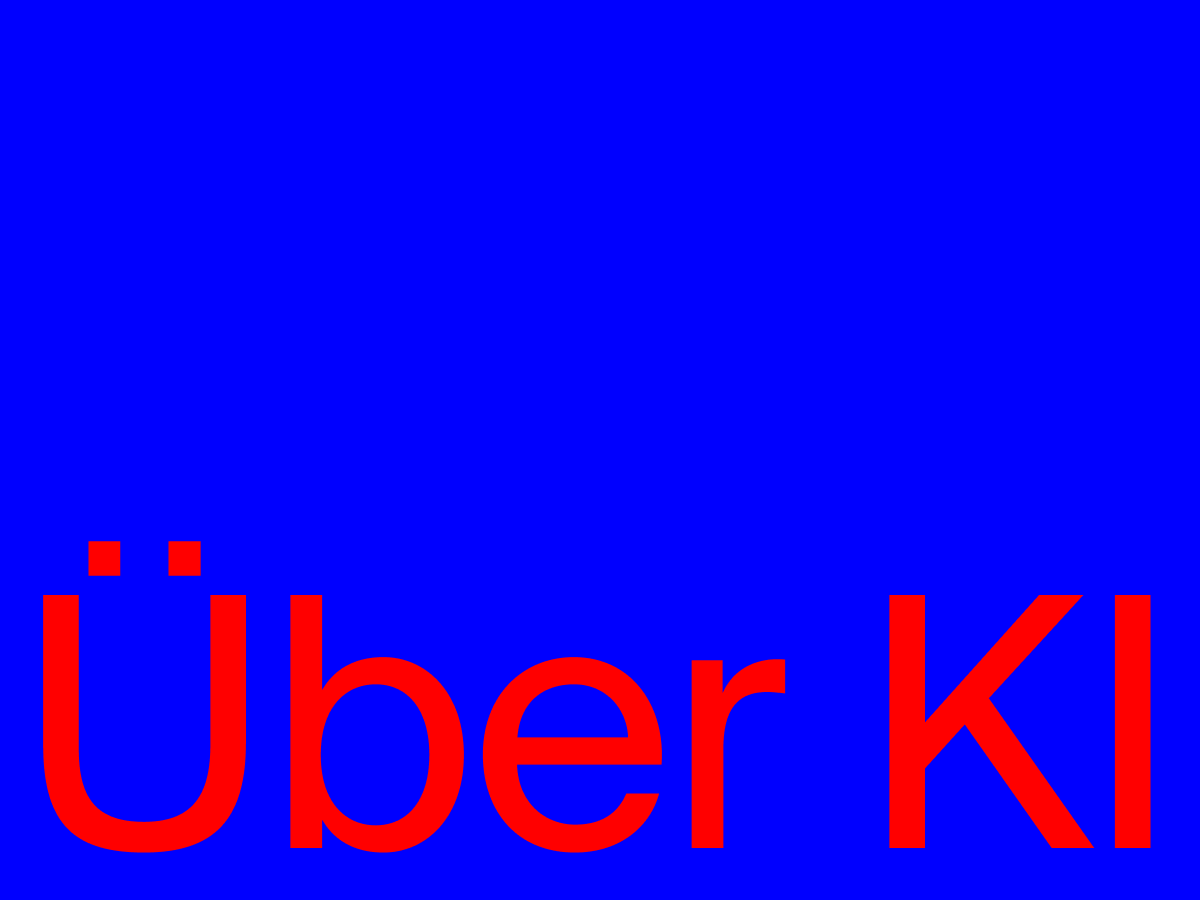 Gedanken über Künstliche Intelligenz
Gedanken über Künstliche Intelligenz
Photo: Vyběr Socky Was ein Ritt! Ich sitze im Zimmer eines Prager Luxushotels und packe wieder einmal diesen Koffer, aus […]
 On Systems
On Systems
From Martin Lorenz I got into lots of exciting literature about systems. One might think that this is a totally […]
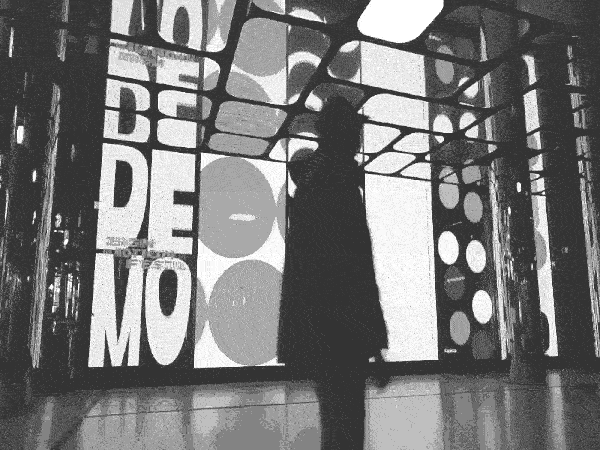 DEMO Festival 2022 was a blast
DEMO Festival 2022 was a blast
This year I had the honor to be part of the DEMO Festival as a curator. It was a super […]
